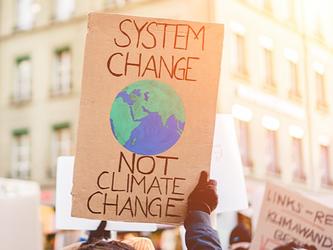Nike’s ad is a masterclass in human brand
By the time Nike’s instantly-infamous ad featuring NFL player Colin Kaepernick was broadcast last week, it had already generated $163m in media exposure. The president of the United States lambasting your ad’s “terrible message” is the sort of publicity that money simply cannot buy.
The ad has dominated public discourse Stateside for days. In terms of impact and influence through advertising, it’s certainly up there with the greats. Lifelong brand devotees setting your product alight like medieval book burners may seem tantamount to marketing self-flagellation but it’s an astute move from Nike – not for the exposure gained – but because it has compounded Nike’s position as a human brand.
In an impersonal digital world, brands need to understand their audience better than ever to build relationships on a human level. After functional brands ( 1950s onwards) and emotional brands ( 2000s onwards), the future will belong to human brands. Brands that behave like people with whom their customers share an affinity; that have a set of principles and stick to them.
In this fractious era, in which identity rules the roost and societal divisions run deep, people identify with brands as a reflection of their own beliefs and values. Kaepernick hasn’t been on a roster since 2016, after he started kneeling for the national anthem to protest racism and police brutality in the US. But Nike stuck by him.
For many of Nike’s audience around the world, the issues Kaepernick raises are significant and emblematic of a rot at society’s core. It’s clear that Nike feels the same. For people who share these values, Nike identifying this rot and using its power to make a statement is impressively human. It cuts through, and deepens their relationship with the brand.
Nike has always been a human brand, in some way championing the underdog – those who Just Do It. As an allegory for the fallout from the ad itself, the line: ‘Believe in something, even if it means sacrificing everything’ screams double entendre. This isn’t just a marketing ploy. Nike believes in this cause; and good for them.
The firm is the world’s largest supplier and manufacturer of athletic shoes, apparel and sports equipment. It can clearly afford to lose a few customers to potentially gain many more, dominate the global news agenda, and stand shoulder-to-shoulder with those who share its values. If people want to burn their socks, then so be it. It’s no loss.
Nike’s marketers knew exactly what they were doing. Following the success of its support for Serena Williams in recent weeks, Nike has been emboldened to push its activism further.
Nike has invested where it will have most impact with those who share its worldview. The brand would rather have deep, meaningful relationships with this significant audience, than indifferent relationships with the masses.
This is human. You can’t please all the people all the time. Being bland when a brand has the clout to make a change is for faceless organisations. Nike has never been faceless.
Thanks in part to Nike, Kaepernick has a platform to speak from, and has dominated the global news agenda subsequently. The issues Kaepernick has risked his career for are today splashed across thousands of news websites across the world. He is a human who shares Nike’s values, that other humans who share those values can relate to. Long may it continue.
Jem Fawcus is group CEO of Firefish

We hope you enjoyed this article.
Research Live is published by MRS.
The Market Research Society (MRS) exists to promote and protect the research sector, showcasing how research delivers impact for businesses and government.
Members of MRS enjoy many benefits including tailoured policy guidance, discounts on training and conferences, and access to member-only content.
For example, there's an archive of winning case studies from over a decade of MRS Awards.
Find out more about the benefits of joining MRS here.












3 Comments
Steve Needel
7 years ago
Jem - Nike did not "stick by" Kaepernick. This was a new agreement. Indeed, Adidas was going to sign him in 2017 if had signed with a team.
Like Reply Report
Phil Barden
7 years ago
And let's never forget the perspecitve that the brain deals with brands using the same region that it uses for objects, not the region it uses for people. https://academic.oup.com/jcr/article-abstract/33/1/31/1822600
Like Reply Report
Peter Totman
7 years ago
Or a brand showboating its liberal credentials David Brent style? Or both?
Like Reply Report